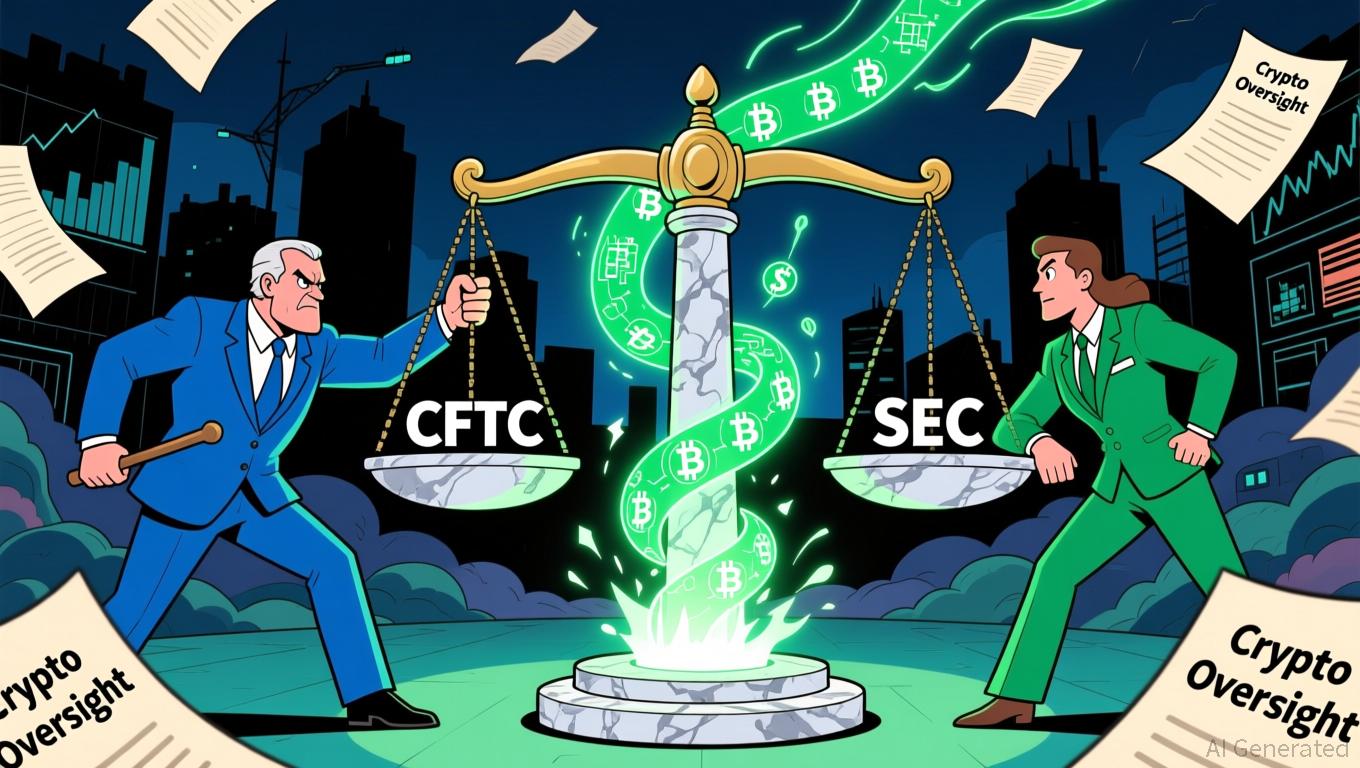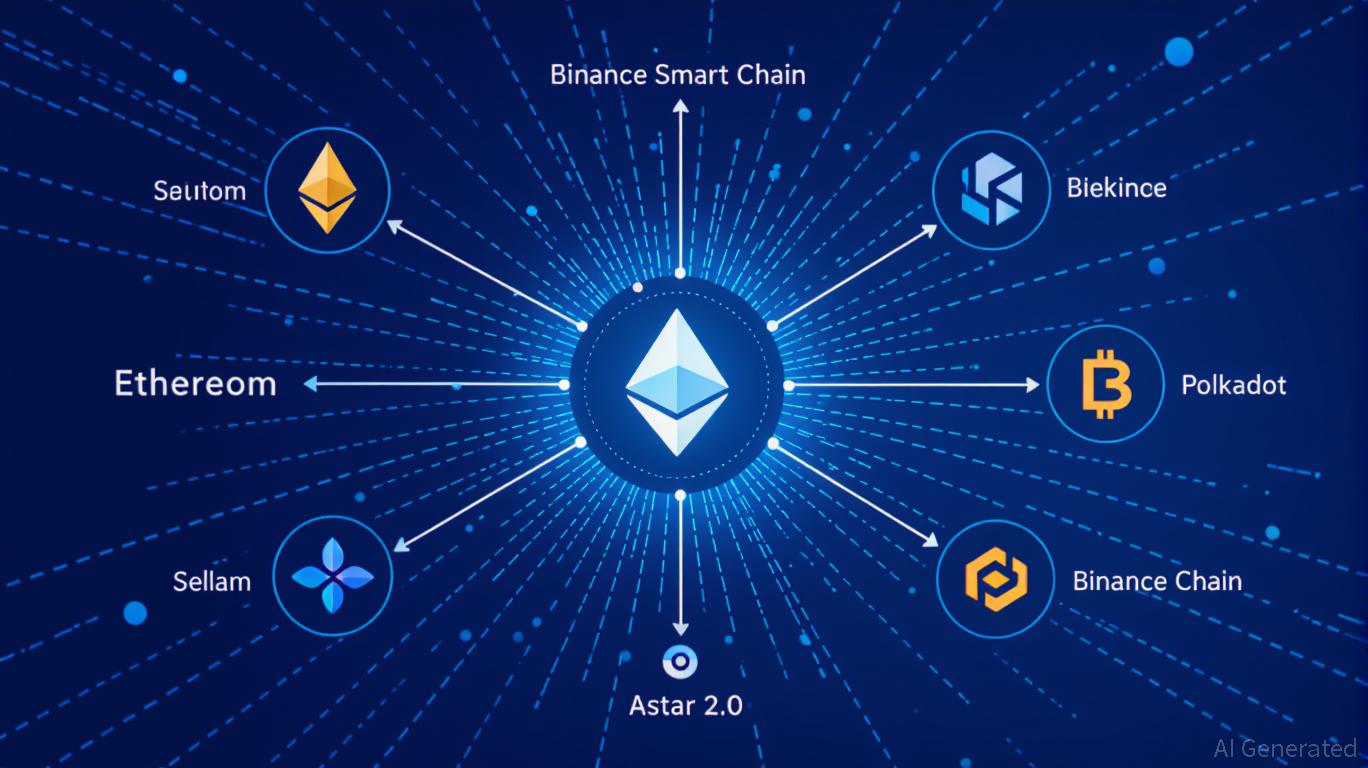XRP News Today: XRP's Strategic Phases: Functionality, Confidence, and Market Flow Propel Institutional Integration
- Ripple's Monica Long outlined XRP's strategic focus on institutional integration, technical innovation, and expanding DeFi use cases via a new lending protocol. - The XRP Ledger's asset-backed lending framework aims to attract institutional investors while RLUSD stablecoin enables instant cross-border aid payments. - India's Madras High Court recognized XRP as legal property, aligning with global trends and enhancing institutional trust in digital asset ownership rights. - Global firms hold $11B in XRP a
At the Swell 2025 event in Singapore, Ripple President Monica Long presented a forward-looking vision for XRP, focusing on innovation, deeper institutional involvement, and broadening the asset’s practical applications. Speaking to the "XRP Army," Long underscored Ripple’s commitment to strengthening digital asset solutions for financial organizations and advancing the
A major aspect of this plan is the soon-to-launch lending protocol on the XRP Ledger. Long shared that developers have introduced a range of new features over the last two years, and the lending protocol will further expand XRP’s role by supporting decentralized finance (DeFi) solutions, according to the report. This protocol is designed to appeal to institutional investors by offering a structure for asset-backed lending, which fits Ripple’s broader strategy to incorporate stablecoins into XRPL. Long noted that this step will boost both liquidity and adoption of XRP by bringing more institutions onto the platform.

Ripple’s RLUSD stablecoin, a key element in its institutional approach, is already making a tangible difference. Operating on both the XRP Ledger and
Legal progress is also supporting XRP’s institutional growth. In India, the Madras High Court recently classified XRP as “property that can be owned and held in trust,” a significant decision that clarifies digital asset rights and ownership, as detailed by Cointelegraph
Interest from institutions in XRP is rising, with global companies now holding over $11 billion worth of XRP. Firms such as Japan’s SBI Holdings and U.S.-based Trident Digital Tech Holdings are treating XRP as a reserve asset, following the Digital Asset Treasury (DAT) model made popular by Michael Saylor, as Coinpedia reported
XRP’s market performance is showing renewed confidence. Although the price recently dipped below $2.30, technical analysis points to a possible surge above the $2.80 resistance if institutional adoption continues, as noted by Cointelegraph. Ripple’s growing regulatory presence—with more than 75 licenses worldwide—and its emphasis on compliance features like Clawback and Deep Freeze are positioning the XRP Ledger as a top choice for regulated organizations, Coinpedia stated.
Disclaimer: The content of this article solely reflects the author's opinion and does not represent the platform in any capacity. This article is not intended to serve as a reference for making investment decisions.
You may also like
Bitcoin News Update: CFTC's Broader Role in Crypto Regulation Ignites Discussion on Clearer Rules
- U.S. lawmakers propose expanding CFTC's crypto oversight via a bill reclassifying spot trading, diverging from SEC's enforcement approach. - Harvard University invests $443M in BlackRock's IBIT ETF, reflecting institutional confidence in crypto as a legitimate asset class. - DeFi projects like Mutuum Finance raise $18.7M in presales, leveraging regulatory momentum and transparent on-chain credit systems. - RockToken's infrastructure-backed crypto contracts attract long-term investors with structured yiel

DASH Aster DEX's Latest On-Chain Growth and What It Means for DeFi Liquidity
- DASH Aster DEX leads 2025 DeFi shift with hybrid AMM-CEX model and multi-chain support (BNB, Ethereum , Solana), boosting TVL to $1.399B and Q3 daily trading volumes of $27.7B. - Platform's 1,650% ASTER token price surge post-TGE attracted 330,000 new wallets, with 94% of BSC-USD volume ($2B/day) driving institutional adoption via Binance/YZi partnerships. - ASTER token mechanics enable 80% margin trading, 5-7% staking rewards, and governance rights, while annual 5-7% fee burns create scarcity and align

Astar 2.0: Leading a New Generation of DeFi and Cross-Chain Advancements
- Astar 2.0 introduces a zkEVM mainnet and cross-chain interoperability, slashing gas fees and enabling 150,000 TPS with 2025 scalability goals. - Strategic partnerships with Mazda, Japan Airlines, and Sony demonstrate blockchain's real-world applications in logistics, loyalty programs, and digital asset tokenization. - Q3 2025 data shows $2.38M DeFi TVL growth and 20% active wallet increase, alongside a $3.16M institutional ASTR token acquisition. - The platform aims to solidify its role as a foundational

Aster DEX Introduces New On-Ramp: Transforming Retail Participation in DeFi
- Aster DEX integrates institutional-grade custody and privacy tech (zero-knowledge proofs) to bridge retail-institutional DeFi gaps via BNB Chain partnerships. - TVL surged to $2.18B by late 2025 through yield-bearing stablecoins and hidden orders, attracting both retail and institutional liquidity. - Despite compliance gaps and wash trading concerns, Aster's Binance alignment and Coinbase listing signals growing institutional validation.
